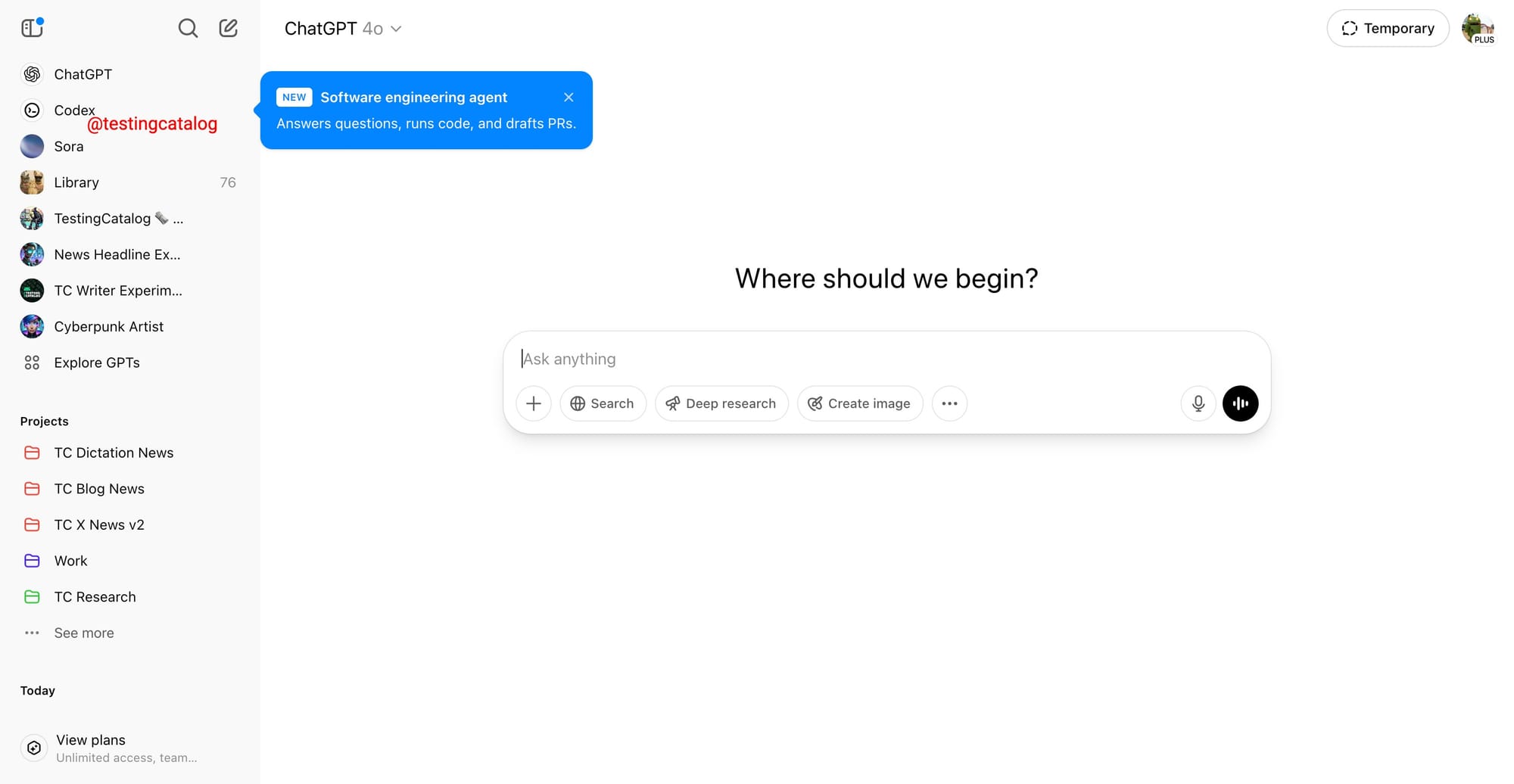Sam Altman’s note on X still stands: a low-key research preview drops today, 16 May 2025, aimed squarely at developers. Inspecting the web app shows strings for a “software-engineering agent” that can answer code questions, run snippets, and draft pull requests, so the preview almost certainly centers on that.
https://t.co/E9WQht9fMK pic.twitter.com/PexpaceB8Z
— Flowers (@flowersslop) May 15, 2025
A new update to the ChatGPT web app reveals references to a "Software Engineering Agent," suggesting that OpenAI is preparing to launch a specialized tool focused on development workflows. The leaked strings describe its core functions as answering programming questions, running code, and drafting pull requests—positioning it as an engineering assistant embedded within the ChatGPT environment. These updates align with OpenAI’s recent emphasis on developer-centric tools, following acquisitions like the AI code editor WindSurf.
The changes include a hidden UI element: a forthcoming sidebar button labeled “Codex,” which will reportedly lead users to a new onboarding page. While the name echoes the earlier branding of OpenAI’s code models, this appears to be a more guided and possibly persistent workspace for engineering tasks. Based on past rollout patterns, it’s probable this feature will debut first on the desktop app, which has experienced delays likely tied to this very launch. There is also speculation that access might be gated to Pro users or higher-tier subscribers, especially given its advanced capabilities.
Coding agents with an entry point in ChatGPT coming
— ʟᴇɢɪᴛ (@legit_api) May 16, 2025
It will not be inside ChatGPT hence the added string: "Back to ChatGPT"
- "Asynchronous coding agents"
- "Write code, fix bugs, draft PRs" pic.twitter.com/H0pPTqSXvz
The company’s broader push is clear. Last month it open-sourced Codex CLI, a terminal agent that rewrites and executes code locally, and earlier this year it agreed to buy WindSurf, an AI-native editor positioned against VS Code. Chat, terminal, and full IDE editing under one roof would place OpenAI inside every step of the toolchain.
Today’s preview ships first to a subset of desktop users; web access likely follows once safety feedback arrives. Until then, the quiet Edit button signals where ChatGPT plans to live next: not beside the IDE, but inside it.






